Native breeds: some abundant, others severe

This is an official catalogue of indigenous Basque breeds, published by the Basque Government in January 2002. This catalogue details the local races and their state.
As can be seen in the catalogue, the situation of these races is worrying. Except for the most productive breeds, that is, the Pyrenean cow and the Latxa sheep, all others are in danger of extinction, with a high risk. It seems that if these races are not collaborated they will disappear. Some simply do not breed, so as the cattle age there will be no specimen of this breed. Others, without administrative intervention, will mix and dilute with other races, that is, even if they multiply, the characteristics of the race will disappear and thus the same. But the decision is made: we must bet on the maintenance of these races.

You may doubt why to help a race that would not survive in itself. And it is that, in some way, the races are created by the beings themselves, the majority are animals adapted by the generations of cattle ranchers that have lived in these places, that perhaps have adapted to the livestock activity. In short, that is the main reason why these races are maintained: they are cultural heritage. It is a living inheritance left by our ancestors.
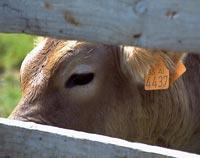
On the other hand, bear in mind that these animals are specially adapted to the orography and climate of these lands. And therefore, they have genetic advantages over other races of the same species, such as diseases. Therefore, the genetic legacy of these races must also be preserved, which in the future may have applications that today cannot be imagined. FAO itself also opted for the original breeds in 1992.
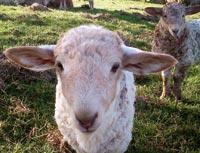
However, the greatest disadvantage of these breeds, from the point of view of the farmer, is productivity. If these are much more productive breeds, which have been imposed all over the world, they have replaced the local races. In this sense, the pyrenean and the latxa sheep are not in danger of getting lost, since in addition to being well adapted to the environment, they provide a lot of milk or meat.
What horse foal
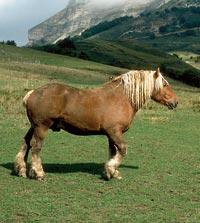
The rest of the native races, however, must be preserved for their survival. Therefore, different programs have been launched aimed at breeding groups of cattle that keep the breed clean and ensure its permanence. Pottoka is a representative example of this situation. This small horse has been in the mountains of Euskal Herria for thousands of years. Pottoka ancestors lived here before man took possession of the land.
The pottoka has been, at least, a source of meat since the Magdalenian, from which the figures of the caves are witnesses, with horses like the pottoka, and has grown until recently for meat. The truth is that it does not give much work: being semi-wild, it lives on the mountain with grass and bushes (in winter it also feeds on argoma) and helps keep the mountain clean. But man prefers high-performance animals and has been confused with larger and stronger horses.
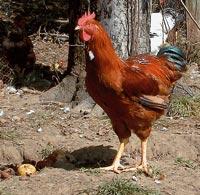
Consequently, the pottokas of the race have decreased greatly, they have hybridized. However, the characteristics of the breed have persisted in some mares and horses, and the union of these specimens has resulted in the recovery of the clean breed, so that the cattle pottoka is gradually strengthening.
To achieve a clean breed the standard has been defined, that is, the physical characteristics that must have a horse or a mare to be qualified as "pottoka": color, height, length and eleven other bodily and mental measures. For example, as for color, the pottoka is dark: black or brown (the pinto is classified separately), and as for its height ranges between 115 cm and 130 cm.

need help for fertilization or childbirth.
The Pottoka breed was catalogued in 1995 in the CAPV and in France previously, in 1970, was declared pottoka breed. Although the established standard was demanding, a few years ago only the cleanest breeding mares and horses would have been used, which were scarce and variability and genetic wealth would have been lost.
However, as the most suitable mares and horses for reproduction have been selected, among which the most powerful ones have been selected, the breed livestock cottage has been expanded to sharpen the characteristics of this standard.
At present, on the contrary, the number of animals is relatively high and has begun to be selected. Thus, the pottokas used as stallions are usually of high qualification, determining by points the condition of pottoka of the animal.
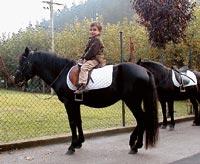
For the definition of the race, in addition to the morphological characteristics, blood tests were performed. The University of the Basque Country analyzed population genetics. It was compared with other breeds of horses (clean blood, mountain, Spanish, Arabic...) and, given the genetic peculiarities of pottoka, it became clear that it was a differentiated race.
Thus, in addition to the identification and qualification of each animal, foral councils and associations working for the pottokas are developing a genealogical book of pottokas.
As can be seen, it remains to be done so that the pottoka race is abundant and rich, but the base is already established.

The recovery of other endangered cattle is done similarly. Not everyone is in the same situation, of course, but there is no lack of effort. In any case, in addition to the work done by the administration, it is essential that the individuals perform, since there are associations committed to the protection of the native races, on which most of the work depends.
They are also privileged
Some animals are recovered but others do not need it. The actions carried out with pyrenean and latxa sheep focus on improving production, performance improvement programs. The Latxa sheep breeding program, for example, began in 1984 and since then a multitude of studies have been carried out with the aim of improving the quality and quantity of milk.

The genetic improvement program measures the amount of milk produced by each sheep and its composition (in general, its protein and fat content), and the male lambs (young goats) of the best sheep are chosen for reproduction. New breeding techniques are also used, as artificial insemination is common for the fertilization of sheep with the seed of these selected goats.
In addition, eleven other studies are carried out to improve the dairy flow of sheep. For example, the morphology of udders has been studied, since the use of milking machines is increasingly frequent, and the shape and size of the end of the udder has much to say in this task. And not only that, but it has also been seen that the risk of diseases depending on the shape of the udder is greater, and all this influences the milk production.
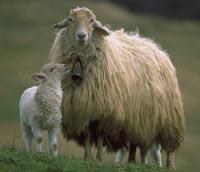
It is noted that there is a big difference in establishing the objective of the program, whether it is a race of good performance or if it is a race that barely gives benefits. By benefiting, a production chain is formed with latxa and pyrenean sheep. But with the rest of races it is not possible. However, if it is intended to improve production and economic performance, in addition to maintaining the same race.
Catalogue
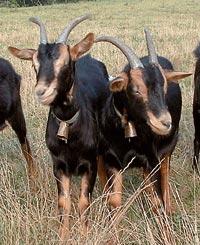
According to the official catalogue of races of the Basque Country, they are very serious: Asno de las Encartaciones, Solomillo de Cabra, Pig and Basque Hen, Perro Pastor, Villano and Villanuco de las Encartaciones (dog breeds) and Monchina Bovina.
Horses are in a better position, but they are not out of danger. The mountain horse and the pottoka are relatively abundant in some mountains, but they are necessary programs of maintenance of the race, especially not to lose the pure race, since in the last century the crossing with other breeds has been very common when it comes to obtaining horses of greater performance.
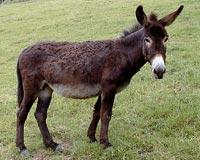
Another has happened with betizu, and if it is maintenance work and, as far as possible, recovery of this semi-wild cow. The other breed of cattle is Terreña, which is also in danger of extinction. The only abundant bovine breed is the pyrenean, for its high productivity.

As for sheep, it should not be said that latxa predominates. In the wide meadows there are large flocks of sheep in the pasture, and the latxa needs a similar environment, but there is another sheep, the scrub, which as its name suggests, is more at ease than in the pasture. It does not grow for milk, so there is less and less scrub.
In addition to Latxa and Sasi-ardi, there is another breed of autochthonous sheep in Carranza; most sheep are white and quite abundant, as they are used to make cheese, while the Black Morros are scarcer and are in danger of extinction.

Although it may seem surprising, the Basque shepherd dog is in danger of extinction. And yet it is in a better position than the rest of native dog breeds, as the other three breeds are in serious danger of extinction, as already mentioned.





